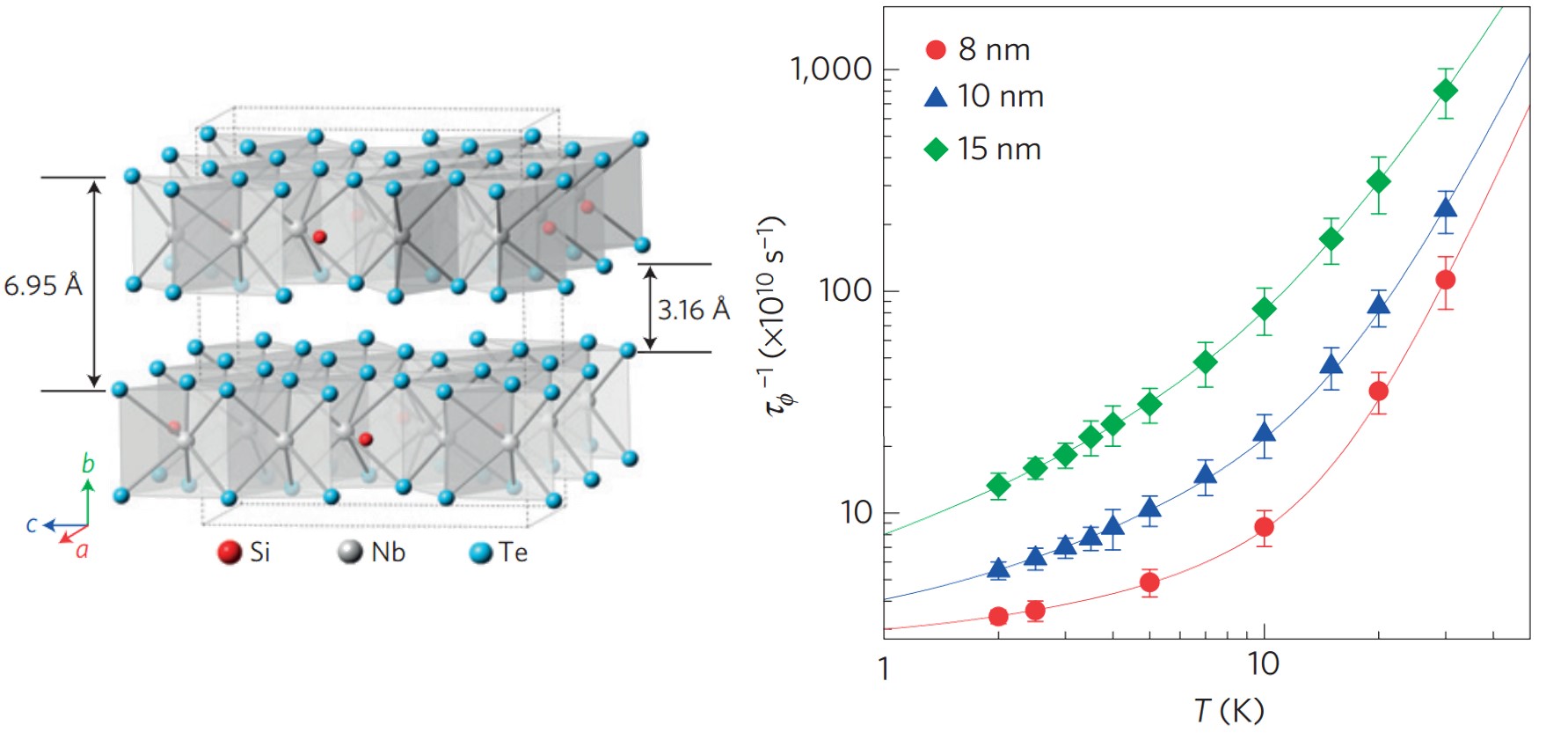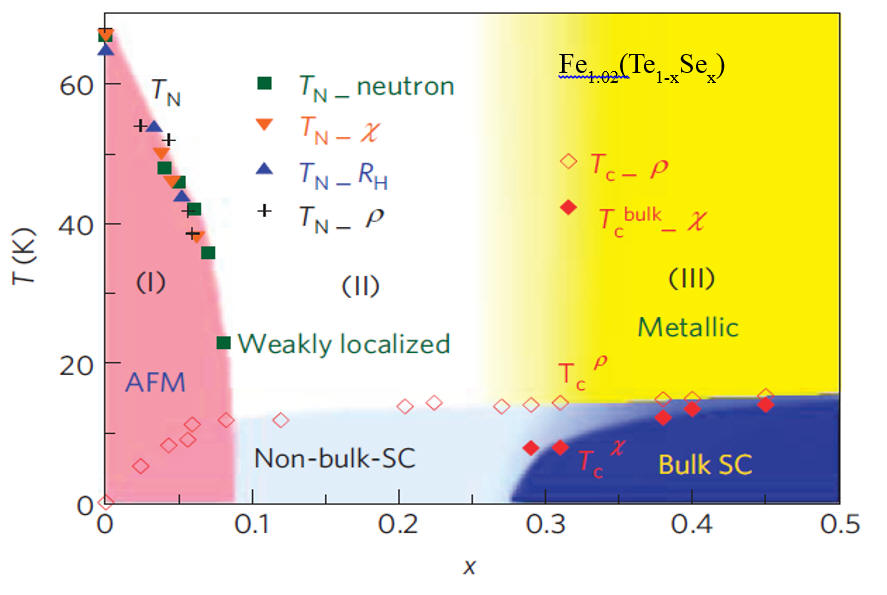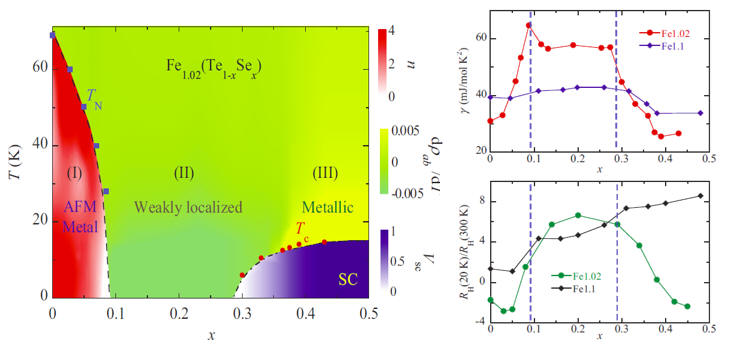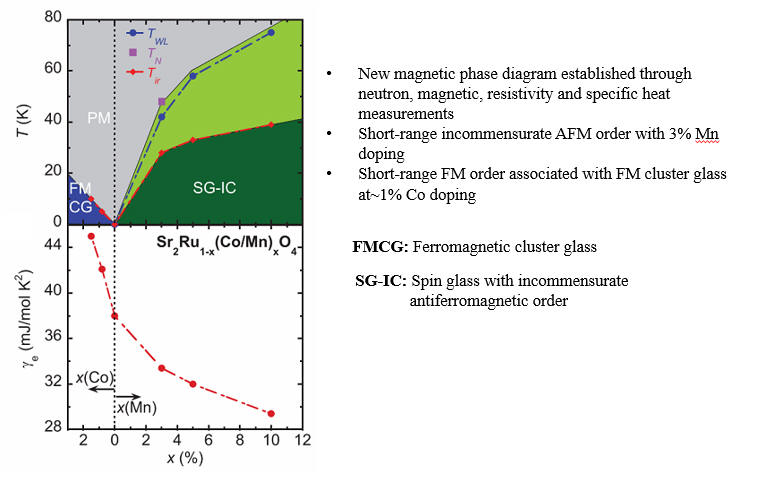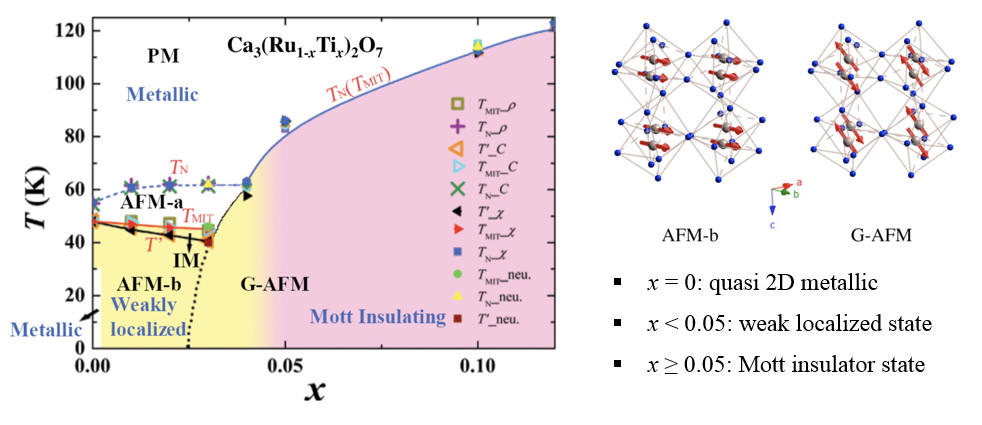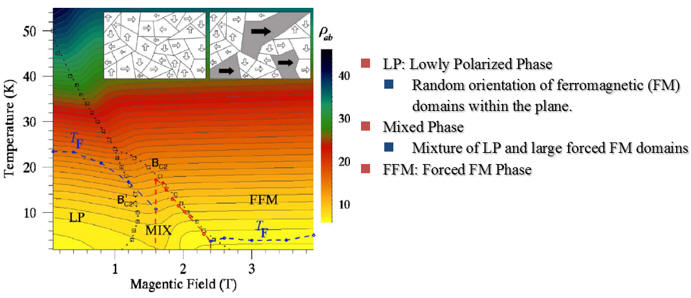Research
Emergent phenomena in transition metal-based quantum materials
Emergent phenomena in quantum materials not only hold the promise for advanced applications in information technologies, but also challenge current knowledge in physics. The Mao group’s research at Tulane aims to discover and synthesize novel quantum materials with emergent phenomena and investigate their underlying physics. His current research is focused on four sub-directions: a) emergent quantum phenomena in strongly correlated oxides; b) interplay between magnetism and superconductivity in iron-based superconductors; c) novel functional two-dimensional (2D) materials of ternary transition metal chalcogenides; d) topological Dirac and Weyl semimetals.
The Mao group not only grows single crystals of quantum materials, but also performs various measurements to study the physics of quantum materials. For crystal growth, his group primarily uses the optical floating-zone, flux and chemical vapor transport methods. His group is capable of growing high quality single crystals of a wide range of materials, including complex oxides, various binary, ternary and quaternary transition metal intermetallic compounds (see the “Crystals” page in his group website for the list of materials his group has grown). In addition to material synthesis efforts, his group also performs electronic transport, magnetization and specific heat measurements to characterize and understand electronic, magnetic and thermodynamic properties of quantum materials. Furthermore, Mao has also established extensive collaborations with researches at other institutions and National Laboratories to study quantum materials using advanced techniques such as neutron scattering and photoemission spectroscopy.
Specific Research Interests:
a) Strongly correlated oxides
Strongly correlated oxides have been the subject of intense study in the past two decades. Many of these materials exhibit exciting and technically useful properties; examples include high temperature superconductivity, colossal magnetoresistance, ferromagnetism and ferroelectricity. Mao’s particular interest in correlated oxides lies in ruthenates, which have attracted tremendous interest due to their fascinating exotic properties, such as spin-triplet superconductivity, Mott insulating state and field-tuned nematic phase. Ruthenates are characterized by the delicate balance between the charge, spin, lattice and orbital degrees of freedom and provide a remarkable opportunity for observing novel quantum phenomena through the control of external stimuli. Mao’s current research on ruthenates aims to understand unusual magnetic phase transitions induced by charge disorders and other emergent phenomena of correlated electrons.
b) Iron-based superconductors
Fe-based superconductivity has been a hot topic in condensed matter physics in recent years. Mao’s group has made important contributions to the study of the interplay between magnetism and superconductivity in the iron chalcogenide superconductor Fe(Te,Se) system [Liu et al., Nature Materials 9, 716 (2010), cited 143 times; Fang et al., Phys. Rev. B 78, 224503 (2008), cited 343 times]. His current work in this area aims to address the role of magnetic fluctuations in the superconducting paring as well as the mechanism of the magnetism of Fe-based superconductor parent compounds.
c) Functional 2D materials of ternary transition metal chalcogenides
The fascinating properties of graphene have opened a new world of 2D crystals, which have high potential to show a rich spectrum of distinct and exotic properties due to the quantum confinement effect. Given the wide range of materials with 2D layered structures, many new 2D crystals could potentially be accessed. Indeed, many new 2D materials beyond graphene have been discovered such as 2D h-BN, black phosphorene and 2D transition metal dichalcogenides (TMDCs). Mao’s interest in 2D materials is to search for novel functional 2D materials in ternary transition metal chalcogenides (TTMCs). His research in this area is motivated by progress in understanding the 2D TMDCs whose distinct properties are attributed to the combined effects of quantum confinement, localized d-bands, spin-orbital coupling (SOC), and inversion symmetry breaking. These properties are shared by layered TTMCs, but with greatly expanded tunability. Firstly, one of the two metal ions in the ternary materials can be a 3d element. Since the 3d orbital is more localized than the 4d/5d orbital, including a 3d element in a TTMC can enhance Van Hove singularities in the density of states, which should result in a remarkable enhancement to the electric field effect and optical absorption. 3d ions such as Fe, Co, Ni, and Mn can also carry magnetic moments, which can possibly lead to 2D magnetic materials with spintronic properties. 3d electrons also involve strong correlation, which can possibly cause exotic properties such as superconductivity. Secondly, the other metal ion in a TTMC can be a heavy element such as a 4d/5d element or Sb/Bi, which would bring in strong spin-orbital coupling. Moreover, many TTMCs have lower structural symmetry and inversion symmetry breaking often occurs in their single layer forms, which, combined with strong spin-orbital coupling, can result in spin splitting. Therefore, we can reasonably expect that 2D TTMCs may show exciting properties due to greater tunability n their band structures. Mao has established close collaboration with his colleague, Prof. Jiang Wei at Tulane, in developing this project. We have recently demonstrated that a layered ternary material Nb3SiTe6 can be thinned down to atomically thin layers via microexfoliation. From quantum transport property studies of atomic layers of this material, we found strong evidence for a long-standing prediction that electron-phonon interaction is suppressed in the 2D limit (Jin Hu et al., Nature Physics 11, 471 (2015)).
d) Topological semimetals
Recent discovery of topological Weyl semimetals in noncentrosymmetric monopnictides and photonic crystals have generated immense interests since they represent a new topological state of quantum matter. The Mao group has recently expanded into this emerging area and studied quantum transport properties of Sr1-yMn1-zSb2 (y, z < 0.1) and TaP. For Sr1-yMn1-zSb2, we find coexistence of a topological semimetal phase and ferromagnetism for the first time (Liu et al., arXiv:1507.07978), which offers a wonderful opportunity to explore a time reversal symmetry breaking Weyl state. For TaP, through systematic magnetotransport measurement under high magnetic fields, we not only demonstrated distinct Weyl fermion transport properties, but also developed a new approach to extract Berry phases for multiple Fermi pockets from the Shubnikov-de Haas oscillations (Jin Hu et al., arXiv: 1507.08346, to appear in Nature Scientific Report). Our further work in this area aims to discover and synthesize new topological semimetal materials.
Examples of recent published works:
- Enhanced electron coherence in atomically thin Nb3SiTe6
J. Hu, et al., Sci. Rep. 6, (2016)
Observed the chiral anomaly-induced negative magnetoresistance.
Generalized the Lifshitz-Kosevich formula for multiple-band Shubnikov-de Haas oscillations and extracted the Berry phases of π for multiple Fermi pockets.
Probed signatures of Zeeman splitting and extracted the Landé g-factor.
- Enhanced electron coherence in atomically thin Nb3SiTe6
J.Hu, et al., Nat. Phys. 11, 471 (2015).
- From (π,0) AFM to superconductivity with (π, π) spin resonance
T. J. Liu, J.Hu, et al., Nat. Mater. 9, 718 (2010).
- Coupling of electronic and magnetic properties in Fe1+y(Te1−xSex)
J. Hu, et al., Phys. Rev. B 88, 094505 (2013)
- Competition Between Antiferromagnetism and Ferromagnetism in Sr2RuO4
J. E. Ortmann et al., Sci. Rep. 3, 2950 (2013)
- From a quasi-2D metal with FM bilayers to a Mott insulator with the nearest-neighbor AFM in Ca3(Ru1-xTix)2O7,
J. Peng et al., Phys. Rev. B 87, 085125 (2013)
- Magnetic phase diagram of (Sr1-xCax)3Ru2O7
Z. Qu, et al., Phys. Rev. B 78, 180407(R) (2008)
- Phase separation in the itinerant metamagnetic transition of Sr4Ru3O10
Z.Q. Mao et al., Phys. Rev. Lett. 96, 077205 (2006).
D. Fobes et al., Phys. Rev. B 75, 094429 (2007).

